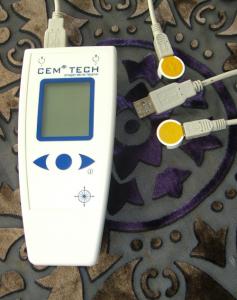From Human Skin Cells to Embryonic Cell Error
A recent study, which excited the medical research community, that reported that they successfully took human skill cells and successfully turned them into embryonic cell contained an error Shoukhrat Mitalipov stood by his claims printed in Journal, Cell. The piece detailed how Mitalipov was able to develop these cells using cloning methods.
The journal receives criticism from a critic that found four separate problems with the research paper.
VIDEO: First Cloned Human Embryos Yield Stem Cells
Mr Mitalipov Commented to another science journal, Nature that three of those errors were made in a hurry as the deadline loomed to publish his finding. The results of the paper remained unaffected by these errors and he stood by the findings.
"The results are real, the cell lines are real, everything is real," said Mitalipov, a reproductive biology specialist at the Oregon Health and Science University in Beaverton.
"I personally made the cells," he said. "I saw them grow into colonies."
He blamed the errors on his rush to publish the research, which he hoped to present next month at. "Maybe it was rushed," he said. "It was my mistake."
The errors where made rushing the report for publication. ? hoped that he would sent in amendments to the report at the International Society for Stem Cell Research meeting, correcting the mistakes.
Mitalipov said his research team will be issuing an erratum correcting the flaws, and hopes that other scientists will try to duplicate his findings, which will lend it even more credibility.
Shoukhrat Mitalipov hoped that others would duplicate his findings giving greater credibility to his achievements.
"The first thing we want to do is have people confirm our results," Mitalipov said. "We are not hiding these cell lines."
The scientific community was divided as to how seriously to view the errors.
Robin Lovell Badge, who heads the Division of Stem Cell Biology and Developmental Genetics at the MRC National Institute for Medical Research in London, wanted there to be a small amount of reservation before criticizing the report.
"I expect the errors above were also due to the rush to publish. The authors should be given a chance to answer and correct mistakes," he told Nature.
Further criticism was put upon Cell that accepted the report and scientific findings only a few days after research was completed. Usually time is given for peer review, in this case appropriate time was not given.
"The four-day review process was obviously inadequate," said Arnold Kriegstein, director of the stem cell program at the University of California, San Francisco.
"It's a degree of sloppiness that you wouldn't expect in a paper that was going to have this high profile," Kriegstein told the British journal.
"One worries if there is more than meets the eye and whether there are other issues with the work that are not as apparent," he said.
The cloning method, using cell culture media to achieve these results was described by the article as an important advancement in cell media and cloning. The importance of the finding was primarily due to the fact that in this case it does not destroy embryos while creating the form of stem cells that then can be developed into other cell types.
These cell media techniques have developed a process where a person’s DNA is transplanted into an egg that has no DNA material this process known as somatic cell nuclear transfer.
The advantages
Proponents for the research said that the research could one day help a whole list of diseases that affect us, from Parkinson’s disease to blindness.
Since the reprogrammed cells use genetic material from the patient, there is no concern about transplant rejection.
Another advantage of the technique is that it circumvents some of the ethical challenges inherent when using fertilized embryos to obtain stem cells.
The process is the chosen process for cloning or DNA advancements since it steers clear of a lot of the controversy that has been beleaguered by legal ethical issues.







